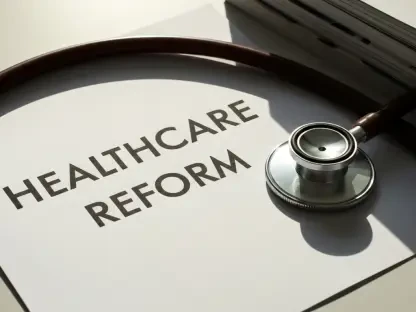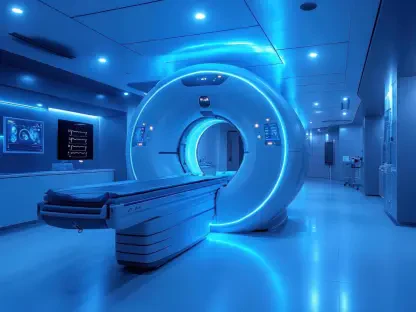As the landscape of public health continues to evolve, few topics spark as much debate as vaccine safety. Today, we’re diving into this contentious issue with Faisal Zain, a renowned healthcare expert specializing in medical technology. With years of experience in the manufacturing of diagnostic and treatment devices, Faisal brings a unique perspective on innovation and policy in healthcare. In this interview, we explore the recent uproar over changes to the CDC’s website regarding vaccine safety claims, the medical community’s response, and the broader implications for public trust in health institutions.
What inspired the recent updates to the CDC’s website, particularly the language suggesting a possible link between vaccines and autism?
The updates to the CDC’s website on Wednesday introduced language that challenges the long-standing consensus on vaccine safety. Specifically, the webpage now states that studies haven’t ruled out a potential link between infant vaccines and autism, and it claims that research supporting such a connection has been ignored by health authorities. This shift seems to reflect a broader agenda within the current administration to reassess autism’s causes, including exploring biological mechanisms and potential causal links. It’s a significant departure from decades of scientific consensus, and it’s clear that these changes are driven by policy shifts rather than new, robust evidence.
Can you walk us through the specific alterations made to the CDC’s webpage, especially regarding the header about vaccines and autism?
One of the most noticeable changes is the header that reads “Vaccines do not cause autism,” which now includes an asterisk. The accompanying note explains that this statement remains on the site due to an agreement with the chair of the U.S. Senate Health, Education, Labor, and Pensions Committee. It’s an unusual addition that seems to undermine the header’s original intent, casting doubt on a statement that has been a cornerstone of public health messaging. This kind of qualification is rare and signals a political compromise rather than a scientific one.
How has the medical community responded to these unexpected changes on the CDC’s website?
The reaction from the medical community has been swift and critical. Organizations like the American Medical Association (AMA) have expressed deep concern, emphasizing that decades of rigorous studies show no link between vaccines and autism. They’ve highlighted that vaccines are safe, effective, and essential for protecting public health. The AMA worries that this new language will confuse the public and potentially lead to harmful consequences, like vaccine hesitancy. It’s a sentiment echoed across many groups who see this as a step backward in public health communication.
What specific worries have been raised about the impact of these misleading claims on public trust and health outcomes?
Leaders in the medical field, such as Dr. Sandra Adamson Fryhofer from the AMA, have warned that these misleading claims could erode public trust in vaccines. When an authoritative body like the CDC introduces doubt where none existed before, it risks confusing parents and caregivers, potentially leading to lower vaccination rates. This isn’t just about individual choices—it’s about community protection. Reduced vaccination coverage can result in outbreaks of preventable diseases, which is a real and immediate threat to public health. The fear is that this change could undo years of progress in building confidence in immunization programs.
How have advocacy groups reacted to the CDC’s reliance on outdated or discredited studies in these updates?
Advocacy groups like Autism Speaks have been particularly vocal, criticizing the CDC for leaning on outdated research, such as a 20-year-old parent survey with a tiny sample size of just 77 respondents. They’ve also pointed out the use of long-discredited correlations, like the idea that the rise in autism diagnoses aligns with increased childhood vaccinations. These groups argue that correlation doesn’t imply causation, and relying on such weak evidence dismisses the robust, established data we already have. It’s seen as a dangerous misrepresentation of science that could mislead the public.
What role do you see political influences playing in these recent shifts at the CDC, especially concerning vaccine policy?
Political influence appears to be a significant driver behind these changes. For instance, the Secretary of Health and Human Services, who has been a vocal critic of vaccines, recently dismissed the CDC’s independent vaccine advisory panel and replaced them with individuals known for their skepticism toward vaccines. This move suggests a deliberate effort to reshape the narrative around vaccine safety, prioritizing personal or ideological beliefs over scientific consensus. It’s a concerning trend because it risks politicizing an area of public health that should be guided by evidence and expertise.
How do you think the dismissal of established evidence by the CDC affects its credibility as a public health authority?
When the CDC, an institution long regarded as a gold standard for public health guidance, dismisses well-established evidence in favor of questionable claims, it severely damages its credibility. Trust in public health institutions is hard-earned and easily lost. By elevating outdated or discredited studies, the CDC risks alienating not just the medical community but also the public, who rely on it for clear, science-based information. Once that trust is broken, it’s incredibly difficult to rebuild, and the consequences could linger for years in the form of misinformation and reduced public health compliance.
What is your forecast for the future of public trust in vaccine programs given these recent developments?
I’m concerned that we’re heading into a challenging period for public trust in vaccine programs. If authoritative bodies like the CDC continue to introduce doubt without solid evidence, we could see a measurable decline in vaccination rates, which would be disastrous for controlling preventable diseases. However, I also believe there’s an opportunity here for the medical community, advocacy groups, and independent experts to step up with clear, consistent messaging to counterbalance this confusion. It’ll take a concerted effort to rebuild trust, but with transparent communication and a focus on science, I think we can mitigate some of the damage. The next few years will be critical in determining whether we can maintain the progress we’ve made in public health.









